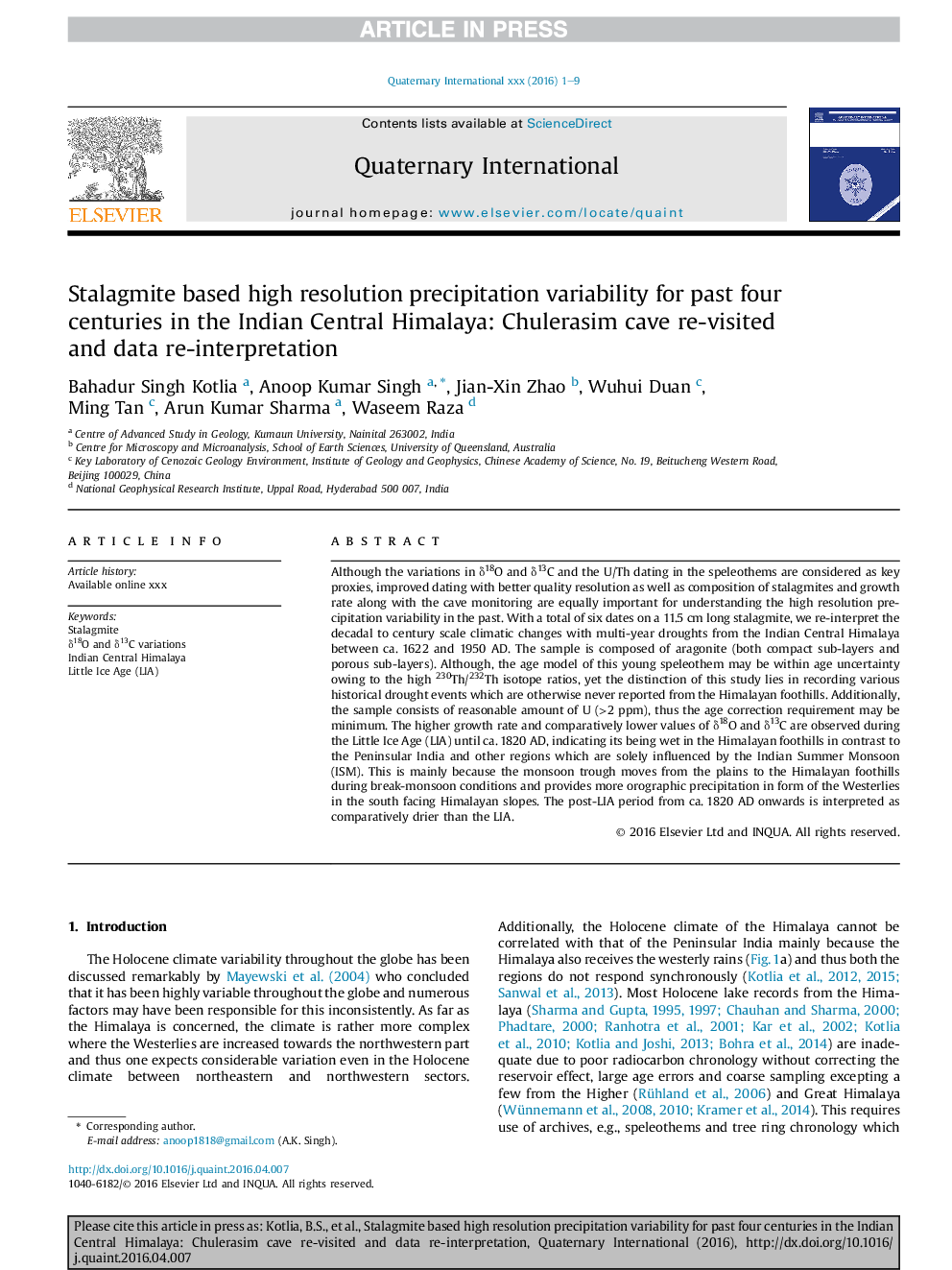| کد مقاله | کد نشریه | سال انتشار | مقاله انگلیسی | نسخه تمام متن |
|---|---|---|---|---|
| 5113383 | 1377929 | 2017 | 9 صفحه PDF | دانلود رایگان |
عنوان انگلیسی مقاله ISI
Stalagmite based high resolution precipitation variability for past four centuries in the Indian Central Himalaya: Chulerasim cave re-visited and data re-interpretation
دانلود مقاله + سفارش ترجمه
دانلود مقاله ISI انگلیسی
رایگان برای ایرانیان
کلمات کلیدی
موضوعات مرتبط
مهندسی و علوم پایه
علوم زمین و سیارات
زمین شناسی
پیش نمایش صفحه اول مقاله

چکیده انگلیسی
Although the variations in δ18O and δ13C and the U/Th dating in the speleothems are considered as key proxies, improved dating with better quality resolution as well as composition of stalagmites and growth rate along with the cave monitoring are equally important for understanding the high resolution precipitation variability in the past. With a total of six dates on a 11.5 cm long stalagmite, we re-interpret the decadal to century scale climatic changes with multi-year droughts from the Indian Central Himalaya between ca. 1622 and 1950 AD. The sample is composed of aragonite (both compact sub-layers and porous sub-layers). Although, the age model of this young speleothem may be within age uncertainty owing to the high 230Th/232Th isotope ratios, yet the distinction of this study lies in recording various historical drought events which are otherwise never reported from the Himalayan foothills. Additionally, the sample consists of reasonable amount of U (>2 ppm), thus the age correction requirement may be minimum. The higher growth rate and comparatively lower values of δ18O and δ13C are observed during the Little Ice Age (LIA) until ca. 1820 AD, indicating its being wet in the Himalayan foothills in contrast to the Peninsular India and other regions which are solely influenced by the Indian Summer Monsoon (ISM). This is mainly because the monsoon trough moves from the plains to the Himalayan foothills during break-monsoon conditions and provides more orographic precipitation in form of the Westerlies in the south facing Himalayan slopes. The post-LIA period from ca. 1820 AD onwards is interpreted as comparatively drier than the LIA.
ناشر
Database: Elsevier - ScienceDirect (ساینس دایرکت)
Journal: Quaternary International - Volume 444, Part A, 15 July 2017, Pages 35-43
Journal: Quaternary International - Volume 444, Part A, 15 July 2017, Pages 35-43
نویسندگان
Bahadur Singh Kotlia, Anoop Kumar Singh, Jian-Xin Zhao, Wuhui Duan, Ming Tan, Arun Kumar Sharma, Waseem Raza,